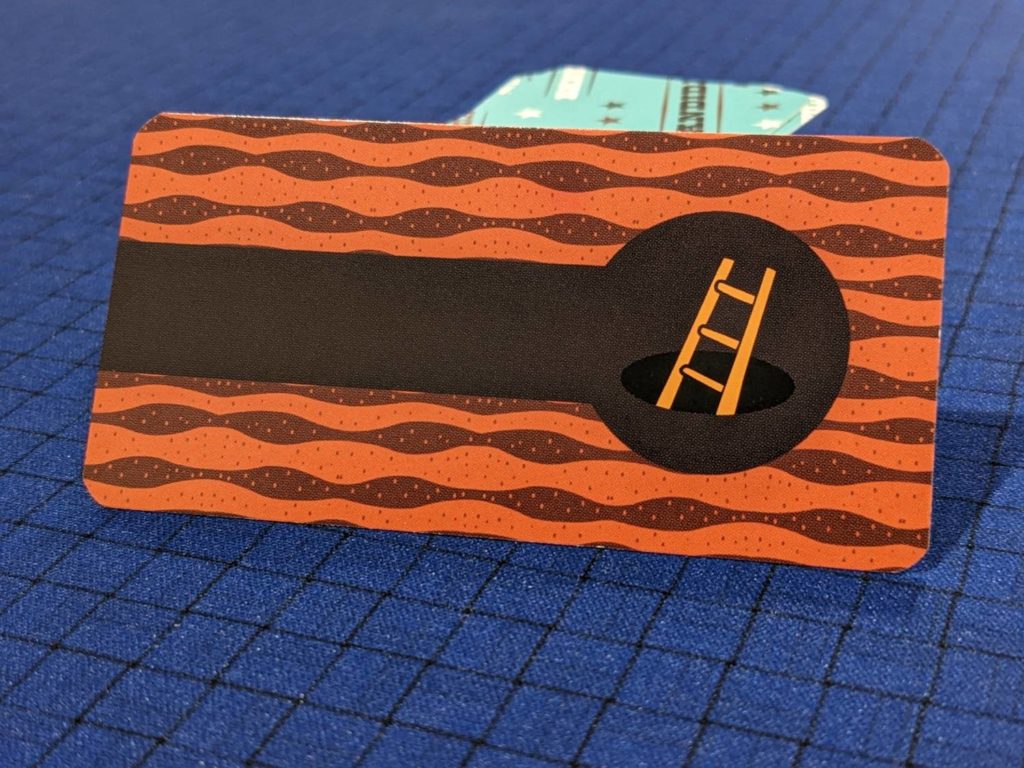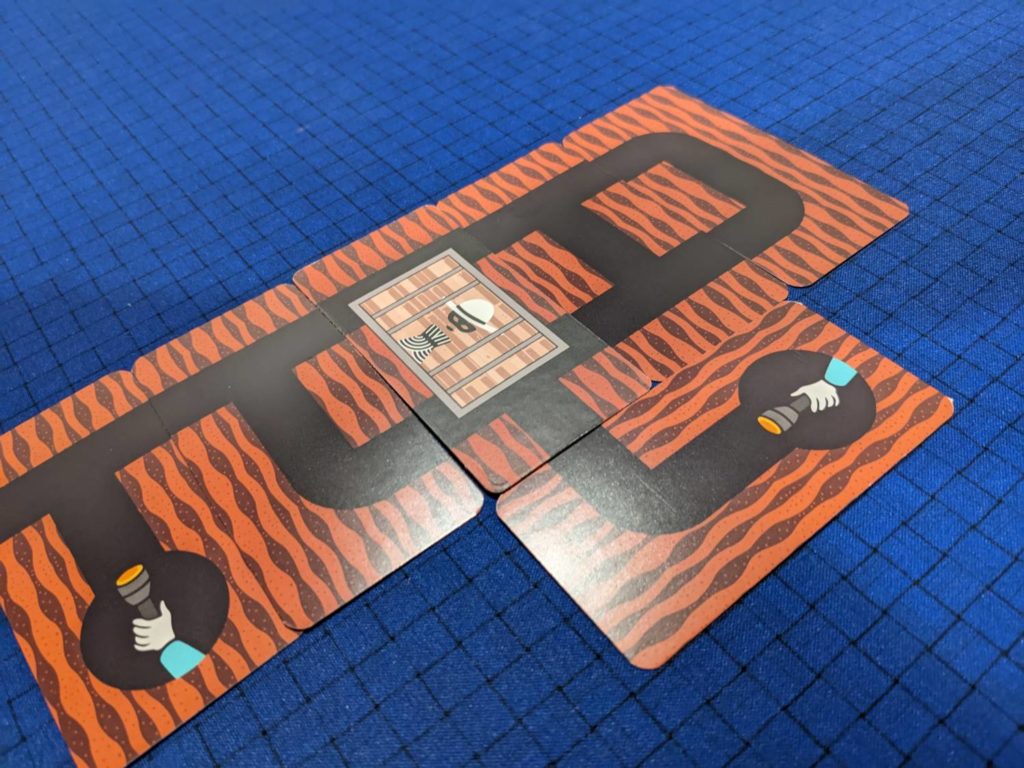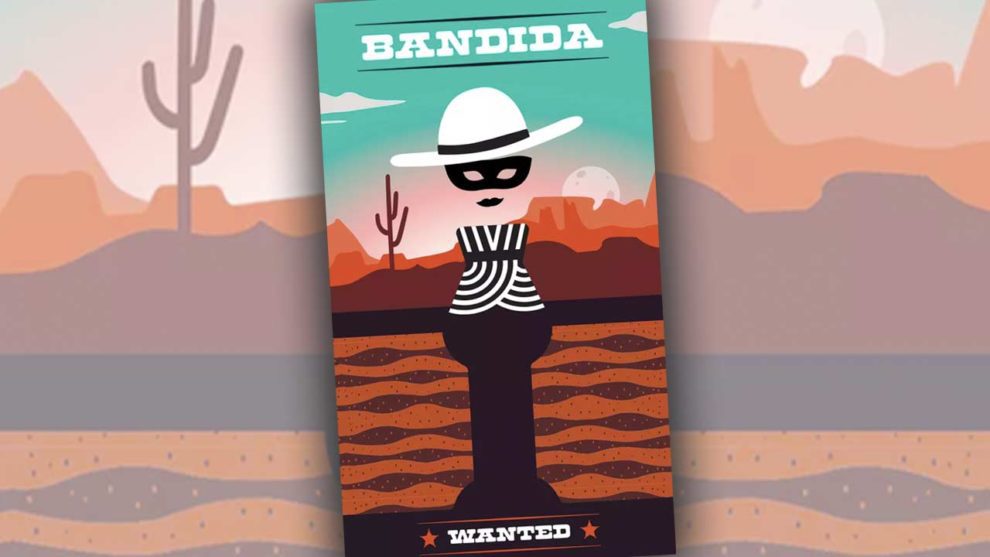Disclosure: Meeple Mountain received a free copy of this product in exchange for an honest, unbiased review. This review is not intended to be an endorsement.
Sometimes, the line between winning and losing is quite thin. Other times, the line is pretty thick, to the point where maybe that line can never be crossed.
Bandido (2016) and Bandida (2020) are games that I would characterize as having a version of that thick line. Across more than a dozen plays both in person and on Board Game Arena, I have never won either game.
Winning first looks like it will be quite easy, but because of the card draw and the complete lack of strategic choices (particularly at the lowest player counts), the games are often quite a hoot. It feels like you’re on a runaway train, destined for disaster.
My colleague David McMillan reviewed Bandido a few years ago and provided a great overview in his write-up. Bandida is a standalone expansion that can be played with or without Bandido, thanks to a couple new wrinkles. It’s still an amusing experience best played with a large group, and it’s still gonna devour the space of your entire table.

Three-Square
Bandida is Bandido, full stop. If you don’t own either game, start with Bandida.
That’s because Bandida has three game modes, as opposed to Bandido’s singular format of play. In Bandida, you can play it like Bandido, by trying to catch Bandida by closing all of the exits. There are spicier item cards hidden in the 69-card Bandida deck, that do things like force you to empty your three-card hand all at once, or give you an option to hold a fourth card. But otherwise, it’s the same game.
The second mode, “Help Bandida Escape!”, sounds like it will change your mission, but in reality it only changes one part of the process. You still have to close off all of the exits, then you have to close one of the exits with the only ladder card in the deck. In this way, Bandida uses that final exit to run to the surface.
The third mode requires both games. You’ll add in the start tile from Bandido to the draw deck, and try to get the two characters to meet and escape together after placing the ladder card. In this way, you’ll have to close off all of the exits, add a tile that has either five or six more paths, and close all of them along with placing the ladder card so that the two characters run off together.

“This is a Game, Right?”
Let’s start there. Yes, this is a game, but just barely, and that’s only because when played with multiple humans, you have some choices on what to do—some based on hidden information because you cannot tell your tablemates which cards you have in your hand.
This is where Bandida, like Bandido, shines brightest. On my only two-player game of Bandida—all of my other plays were solo or with 3+ players—there was a nice tension after we managed to close off all but one path, then our card draw went right into the crapper.
“So, uh, can you help with that bottom part of the path? Or the east-facing one?”
“Oooh, all of these cards are garbage. Maybe you take the one that doesn’t hurt us so bad?”
You’re always hoping that you’ll draw even a single card that has a dead-end, featuring the familiar flashlight being held by the off-screen law enforcement. And it’s the card draw that will ultimately determine if Bandida fits for you or not.
That’s because both Bandido and Bandida have an interesting problem. It’s a little easier at higher player counts because you have 9 or 12 cards to choose from if you are playing with three or four players. There’s a good chance that one of you has a card that will work. But each player still has to take a turn, and it’s fun to figure out where players with terrible cards should bury those on the map.
When you are playing alone, you’ve got three cards to choose from, but a bit of an issue: how to close off five (or six) exits at the start of play, depending on the difficulty level. And your decision making is quite limited because you don’t have any control of the cards being drawn from the top of the deck.
Bandida gives you a little more to think about thanks to those item cards. But not enough to break it away from being a 1980s-style video game like Pitfall. You’ll be able to jump over the alligator pond with the jungle swing a few times, but not forever. You are told to make choices, but the game is so comically hard because you don’t really have any choices; in Pitfall, your best bet is to just keep running to the right.
That means that as a 15-minute joyride, Bandida is great, as long as you have the table space. (As David mentioned in his Bandido review, it’s amazing that such a small game could eat so much of your table!) It also begs to be played a few times in one sitting, because you think you were one card away from closing all of the exits, even though the truth is that it was a much longer shot.
If you hit the jackpot, and are dealt dead-end or loop cards that help close up exits, you might play five or six cards and win the game. But I’ve not seen that happen yet. Bandida is simple to teach and fun to take part in, but I’m only calling this a game because it is produced by a solid publisher. The design takes most of the decisions out of your hands, so grab a drink and a couple friends while figuring out how Bandida will make her grand escape.











